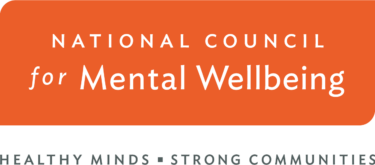1 – Establish Trust
Youth must feel safe to engage in conversations around substance use prevention. You can create a welcoming and supportive environment by building trust and rapport, engaging parents/guardians when appropriate, keeping confidentiality at the forefront and staying up-to-date on best practices.
Building Trust and Rapport with Youth
Having conversations with youth about substance use can be difficult. It’s important to first establish a trusting relationship that fosters open communication and encourages active engagement and receptiveness to sensitive topics related to substance use.
The best way to acknowledge varying backgrounds and experiences is to have a respectful and open conversation. This will help to establish boundaries and provide a general sense of the youth’s perspective.
Check out this quick video to learn more about building trust and rapport with the youth you serve.
Confidentiality and Parental Involvement
Guidance and resources for understanding confidentiality when navigating discussions with youth and their parents/caregivers.
Communication Pathway
The purpose of this worksheet is to guide you through a few simple communication steps that can be tailored to any circumstance.
Prevention Language Guide
Language is powerful. Words impact the way individuals interpret ideas, perceive intentions and view the world around them. The words we choose to use matter. This is especially true when talking about substance use. That’s why it’s important to use non-stigmatizing, person-first language to reduce stigma and negative bias. This guide, Language Matters When Discussing Substance Use, outlines how to incorporate non-stigmatizing language into your conversations with young people.
Opportunities for Support
Role of Health Care Providers
In assessments conducted by the National Council for Mental Wellbeing in 2021 and 2022, 52% of youth identified health care providers as a trusted source of information on substance use, a finding that positions providers to have a significant impact on youth attitudes and beliefs about substance use. (Sloyer et al., 2023).However, the same respondents indicated often feeling uncomfortable speaking to providers; only 7% ranked health care providers as the adults they felt most comfortable speaking with about substance use and mental health (Sloyer et al., 2023).
Health care providers are in a valuable position to convey key information to youth and help increase trust in the medical system.
Role of Family
Though young people state that family is important to them (Sloyer et al., 2023) and can be a source of joy and support, almost half of youth surveyed say that fear of getting parent or caregiver permission is the reason they do not have access to mental health care. On the flip side, youth cited being more comfortable having difficult conversations with parents and caregivers than health care providers (Sloyer et al., 2023). This presents parents and guardians the opportunity to bridge the gap between youth and providers by helping youth access information about mental health and substance use from trusted and supportive sources. Parents and caregivers can help ease fears about receiving care by proactively supporting youth.
This project is supported by the Centers for Disease Control and Prevention (CDC) of the U.S. Department of Health and Human Services (HHS) as part of a financial assistance award totaling $1,500,000 with 100% funded by CDC/HHS. The contents are those of the author(s) and do not necessarily represent the official views of, nor an endorsement by, CDC/HHS or the U.S. Government.
